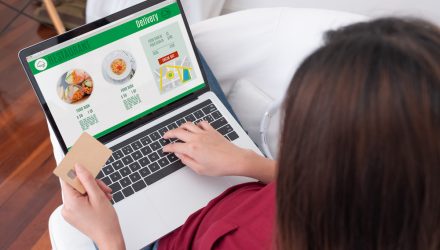The on-demand economy combines a variety of platforms to ensure people can get the things and services they need with few or no delays.
Here are six industries that have experienced direct advantages due to the rise of the on-demand economy.
1. Beauty and Hair
Many people book their beauty treatments and haircuts weeks in advance. However, that approach doesn’t work so well for unexpected events that make people want to look their best.
For example, maybe a person gets called for a job interview at a dream company and would love to get a new hairstyle first. Perhaps someone hears their college roommate is arriving for a short visit in a week, and they want to book a makeup appointment a few hours before that person shows up.
Numerous beauty apps meet these needs by allowing users to schedule appointments at certain times. The beauty or hair specialist shows up at the client’s residence or another preferred place, such as an office.
If people prefer to go in-person for their appointments, they can use an app called StyleSeat. It aggregates beauty and hair specialists in a person’s area and tells them which ones have same-day openings available.
2. Health Care
According to a market analysis report, the global telemedicine market will show a combined annual growth rate (CAGR) of 19% from 2017-2022. On-demand doctor visits are not the only drivers of the growth, but they’re also substantial contributors.
The on-demand economy allows people to receive urgent care or treatment for managing chronic conditions without having to drive to facilities or sit in waiting rooms. The appropriately named Doctor on Demand allows people to make appointments to see U.S.-based physicians within minutes. Although clients can make appointments, they can also see the next available provider. That’s just one example of the many companies in this space.
Similarly, on-demand blood test companies allow people to order labs without going to a doctor first. Supporters say this method could help people better understand their bodies and health. However, some critics assert that these on-demand tests may have inaccuracies that give the wrong conclusions.
3. Hospitality and Travel
Considering the travel industry, the internet introduced people to how easy it is to book hotels for last-minute trips, often saving money in the process. Then, whether people are traveling for business or purely for fun, they have more options when choosing where to stay and when.
One of the companies leading the way in on-demand hotel booking is HotelTonight. It has a website and app and gives users opportunities to choose rooms in various cities — plus categories ranging from Crashpad to High Roller. People can also get limited-time deals that are even lower than the normal rates HotelTonight publishes. If they’re traveling with others, it’s possible to book multiple rooms at once.
Additionally, there are on-demand travel assistant apps, plus platforms that help people find fellow travelers in the locations closest to them. Thanks to these on-demand services, people can avoid feeling so overwhelmed when they’re in new places.
4. Transit
On-demand taxi apps showed people they don’t have to hail the vehicles from the street. There’s a better way that involves booking the nearest taxi when they need it and tracking the car’s progress. On-demand transit goes beyond those ride-hailing services, though.
Electric scooters have come to many cities, and the companies behind them allow people to search for the locations nearest them, scan a barcode with an app to unlock it and hop on board.
One of the downsides of this system is that users can leave the scooters unattended after a trip, which could make sidewalks and other highly trafficked areas hazardous. Otherwise, they help people get around in a way that’s more eco-friendly than using a car.
Another example of on-demand transportation comes from apps that facilitate on-demand driving, often through car sharing. In that arrangement, people can earn side incomes by letting others drive their cars when they don’t need to use them. That setup assists people who don’t own cars or those who temporarily don’t have access to them due to unexpected breakdowns and repair shop appointments.
5. Pet Care
Statistics from The American Veterinary Medicine Association said that at the end of 2016, 57% of American households had pets. It’s not surprising, then, that many of the on-demand brands cater to pets and their needs. SpotOn is a pet-friendly ride-hailing service, and WalkingPaws provides on-demand dog-walking services.
Other options provide pet-sitting services on a person’s schedule or make it easy for people to book on-demand grooming services. They help people who have a lot going on but don’t want to overlook their furry friends.
6. Food Delivery
Food delivery certainly isn’t new, but the on-demand economy has opened opportunities for consumers and providers alike. DoorDash and Grubhub are some of the top on-demand food delivery companies. The former recently claimed the top spot for consumer spending market share. These sites and apps allow people to order food from local restaurants and usually receive it in an hour or less.
Those options are especially convenient for busy parents, disabled people or anyone who wants to enjoy delicious meals without having to leave the house. Also, when local restaurants partner with these on-demand services, they could potentially promote their offerings to a new segment of the market.
The On-Demand Economy Brings Services to People Who Want Them
This list shows how the on-demand economy connects individuals with the services they want or need at times that suit their schedules. As companies keep experimenting with other ways to benefit from the on-demand economy, people will inevitably see other industries affected by the shift.

